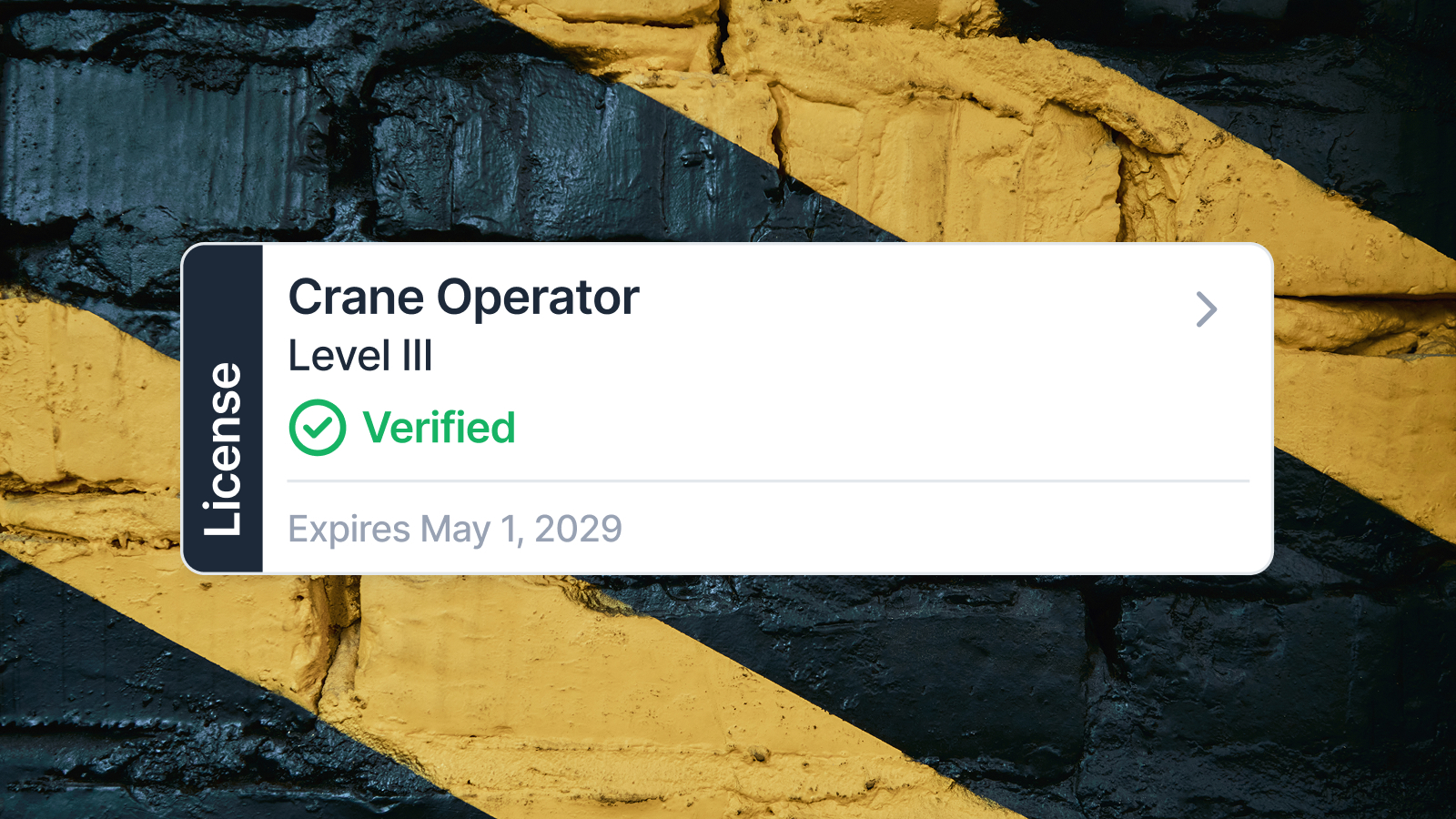
Step-by-Step Guide to Becoming a Construction Worker Woman in California

California's construction industry offers exceptional opportunities for women seeking high-paying careers with strong job security. With 12 of the 15 top occupations accessible with a high school diploma or less being in construction, and apprentices who graduate typically earning starting wages of $75,000 or more per year, this field provides a clear path to financial independence without the burden of student debt.
Understanding the Current Landscape
Women make up only 10.9% of the building trades workforce nationally, but California is actively working to change this through significant investments. The state recently announced $26 million in Equal Representation in Construction Apprenticeship (ERiCA) grants to 25 construction apprenticeship programs, specifically aimed at increasing access for women and underrepresented communities.
A major barrier to entry is awareness. As one industry expert notes, "People don't know what they don't know. If people are not aware of or cannot see themselves performing a role within an industry, they will never think of that position as a career."
Step 1: Research Construction Trades
Construction encompasses diverse specialties that require different skills and offer unique work environments. Major trades include:

Electrician: Install and maintain electrical systems in residential, commercial, and industrial settings. Work involves reading blueprints, running wiring, and troubleshooting electrical issues.
Carpenter: Build and repair building frameworks and structures, including walls, floors, doorframes, and cabinets. Skills include measuring, cutting, and assembling wood and other materials.
Plumber/Pipefitter: Install and repair water supply lines, drainage systems, gas systems, and industrial piping. Physical work requiring problem-solving skills and technical knowledge.
HVAC Technician: Install, maintain, and repair heating, ventilation, air conditioning, and refrigeration systems in buildings and vehicles.
Ironworker: Build structural frameworks for buildings and bridges using steel and other metals. Work often involves heights and heavy materials.
Heavy Equipment Operator: Operates construction machinery, including bulldozers, cranes, backhoes, and excavators, for site preparation and construction.
Sheet Metal Worker: Fabricate and install metal products for construction, including ductwork, roofing, and siding.
Consider which trade aligns with your interests. Some involve more problem-solving and precision work, while others emphasize physical strength or working at heights.
Step 2: Meet Basic Requirements
Most construction apprenticeships require:
- Minimum age 18 (some accept 17½ with guardian consent)
- High school diploma or GED
- Valid driver's license
- Physical ability to perform job duties
- Pass drug screening
- One year of high school algebra or one semester of college algebra with a passing grade
Don't meet these requirements yet? Many programs help you bridge gaps. Several organizations offer GED preparation, driver's license assistance, and algebra support specifically for women entering the trades.
Step 3: Explore Pre-Apprenticeship Programs

Pre-apprenticeship programs provide foundational training and significantly improve your chances of acceptance into competitive apprenticeship programs. Over 80% of NCCT graduates have successfully moved into union apprenticeship programs.
Tradeswomen, Inc. (Bay Area)
- Website: https://tradeswomen.org/programs/
- Offers free Introduction to Apprenticeship workshops
- Provides hands-on training to build confidence
- Hosts Women Can Build Career Fairs
- Partners with Bay Area Apprenticeship Coordinators Association (BAACA)
Cypress Mandela Training Center (Oakland)
- Website: https://www.cypressmandela.org/programs
- Offers a FREE 16-week pre-apprenticeship program for Bay Area men and women ages 18 and older
- Combines hands-on training with classroom instruction
- Prepares students for skilled trades jobs
Northern California Construction Training
- Website: https://ncct.ws/
- Bridges students to union apprenticeship programs
- Strong job placement record
Construction Trades Workforce Initiative (CTWI)
- Website: https://ctwi.org/
- About 60 percent of the apprentices and pre-apprentices CTWI serves are women.
- Proven success record with strong support services
Pre-apprenticeship programs typically last 8-16 weeks and introduce multiple trades so you can make informed decisions about your career path.
Step 4: Apply to Apprenticeship Programs
Apprenticeships are the primary pathway into construction careers. You'll earn wages while learning through a combination of on-the-job training and classroom instruction.
Union Apprenticeships

Union apprenticeships offer structured training, higher wages, and comprehensive benefits, including healthcare and retirement plans. Programs typically last 3-5 years, depending on the trade.
Find Programs Through:
- California Apprenticeship Coordinators Association: http://www.calapprenticeship.org/
- California Division of Apprenticeship Standards: https://www.dir.ca.gov/databases/das/aigstart.asp
- Build California: https://buildcalifornia.com/training-pathways/
Major Union Training Centers:
Sacramento-Sierra Building Trades Council
- Website: https://ssbctc.org/apprenticeship-opportunities/
- Offers 28 different apprenticeship programs, including electrician, plumber, carpenter, ironworker, HVAC, and more
Los Angeles/Orange Counties Building Trades Council
- Website: https://laocbuildingtrades.org/apprenticeship-building-trades/
- The site lists contact information for all affiliated union apprenticeship programs in Southern California.
- Covers electricians, plumbers, carpenters, sheet metal workers, operating engineers, and specialized trades
ABC Northern California (Merit Shop/Non-Union)
- Website: https://abcnorcal.org/education-training/apprenticeship/
- Programs in carpentry, electrical, plumbing, painting, and construction craft laborer
- No tuition fees for apprentices
- Classes held in blocks throughout the year
ABC Southern California (Merit Shop/Non-Union)
- Website: https://abcsocal.org/education-training/apprenticeship-program/
- Four-year programs in the electrical and plumbing trades
- Classes meet one night per week, plus mandatory Saturdays
Application Process
- Submit Application: Most programs require sealed official transcripts, a valid ID, proof of algebra coursework, and an application fee ($25-50).
- Take Aptitude Test: Programs typically use standardized tests measuring math, reading comprehension, and mechanical reasoning. Pre-apprenticeship programs prepare you for these tests.
- Interview: Dress professionally and demonstrate enthusiasm, reliability, and commitment to learning the trade.
- Wait for Acceptance: Some programs have waiting lists. Apply to multiple trades and programs to maximize opportunities.
Application periods vary by program and trade. Contact programs directly to learn when they're accepting applications.
Step 5: Consider Community College Programs

While apprenticeships provide the most direct path to employment, community colleges offer alternative entry points and complementary education.
Los Angeles Trade-Technical College (LATTC)
- Website: https://www.lattc.edu/academics/pathways/cmu
- Address: 400 West Washington Boulevard, Los Angeles, CA
- Offers certificates and degrees in Architectural Technology, Carpentry, Electrical Construction and Maintenance, Electrical Line-Worker, HVAC and Refrigeration, Plumbing, Welding, and renewable energy programs
- In 2023, the college awarded 264 construction degrees.
- Tuition is approximately $1,196 per year for California residents
Mt. San Antonio College (Walnut)
- Website: https://www.mtsac.edu/
- Known for strong Career Technical Education programs
- Fast path to employment or associate degree options
Long Beach City College
- Website: https://www.lbcc.edu/
- Approximately 24,000 students
- Programs in construction, media arts, and business
Cerritos College (Norwalk)
- Website: https://www.cerritos.edu/
- Received $1.25 million in ERiCA funding for its field ironwork apprenticeship program
- Over 21,000 students with 100+ programs
Community colleges provide flexibility for those who need to work while studying and offer additional pathways to four-year degrees if you decide to pursue construction management or engineering.
Step 6: Leverage Support Resources
California provides substantial support specifically for women entering construction:
Financial Support
ERiCA Grant Program
- Provides childcare assistance, covering the cost of daycare or a babysitter so parents can attend apprenticeship or pre-apprenticeship programs
- Funds recruitment efforts, worksite culture improvements including anti-harassment training, and mentoring and mental health support
California Promise Program Many community colleges offer two years of free enrollment for first-time and returning full-time students.
GI Bill Benefits Several apprenticeship programs honor Post-9/11 GI Bill benefits, providing eligible veterans with tax-free stipends.
Organizations Supporting Women in Construction
Tradeswomen, Inc. a primary organization supporting women throughout Northern California with workshops, networking, and advocacy. Know more
National Association of Women in Construction (NAWIC) a Professional organization providing networking, education, and advocacy. Know more
California Division of Apprenticeship Standards Government agency overseeing apprenticeship quality and equity initiatives. Know more
Step 7: Prepare for Physical Demands
Construction work is physically demanding. Start preparing before you begin:
Build Strength and Endurance: Focus on functional fitness —lifting, carrying, climbing, and sustained standing. Many gyms offer construction-specific training programs.
Invest in Quality Gear: Steel-toed boots, work gloves, and appropriate clothing protect you on job sites. Many apprenticeships provide or subsidize safety equipment.
Practice Tool Use: Familiarize yourself with basic hand tools and power tools through DIY projects, maker spaces, or community workshops.
Develop Heat/Cold Tolerance: Much construction work occurs outdoors in all weather. Gradually acclimate yourself to working in various conditions.
Step 8: Navigate Workplace Culture

As a woman in a male-dominated field, you'll face unique challenges. Successful tradeswomen recommend:
Find Mentors: Connect with other women in your trade through organizations like Tradeswomen, Inc. Their experience navigating job sites proves invaluable.
Assert Yourself Professionally: Demonstrate competence, reliability, and willingness to learn. Let your work speak for itself.
Know Your Rights: ERiCA funding supports anti-harassment and anti-discrimination training for construction crews. Familiarize yourself with workplace rights and reporting procedures.
Build Alliances: Develop professional relationships with coworkers who respect your skills and contributions.
Document Everything: Keep records of completed training, certifications, hours worked, and any workplace issues.
Step 9: Advance Your Career
Construction offers clear advancement pathways:
Journeyman Status: After completing an apprenticeship (typically 3-5 years and 6,000-10,000 hours), you become a journeyman earning full wages ($75,000-$100,000+ annually).
Specialization: Develop expertise in specialized areas like green building, historic restoration, industrial work, or advanced technical systems.
Foreman/Supervisor: Lead crews and manage job site operations. Requires strong technical skills and leadership abilities.
Inspector: Ensure work meets code requirements. Often requires additional certification.
Estimator: Calculate project costs and materials. Combines field experience with analytical skills.
Project Manager: Oversee entire projects from planning through completion. May require additional education in construction management.
Business Owner: Start your own contracting business. Many successful contractors began as apprentices.
Instructor: Teach the next generation at training centers or community colleges.
Step 10: Maintain Credentials and Continue Learning
The construction industry constantly evolves with new materials, techniques, and regulations.
Required Certifications: Most trades require state licensing. Maintain certifications through continuing education.
Safety Training: OSHA certifications and trade-specific safety training keep you current and employable.
Emerging Technologies: Green building, solar installation, smart building systems, and automated equipment represent growing specialties.
Professional Development: Attend conferences, workshops, and training offered by unions, trade associations, and manufacturers.
This is where BuilderFax becomes essential.
Track Your Career with BuilderFax
Throughout your construction career, you'll accumulate numerous certifications, licenses, training completions, and credentials. Losing track of these documents can delay job opportunities and complicate career advancement.
BuilderFax provides a free digital wallet specifically designed for construction professionals to store, organize, and instantly share all your credentials. Whether you're applying to apprenticeships, moving to new job sites, or pursuing advanced certifications, BuilderFax keeps everything accessible in one secure location.
Download BuilderFax for free today and start building your professional credential portfolio. Available on iOS and Android, BuilderFax is the construction industry's trusted solution for credential management.
Your Path Forward
California's construction industry needs skilled workers, and the state is investing heavily to ensure women have equal access to these careers. With apprenticeships paying from day one, comprehensive benefits, and clear advancement pathways to six-figure salaries, construction offers financial security without the burden of student loan debt.
The path requires commitment, physical capability, and persistence, but thousands of women are successfully building careers in California construction. The support systems, training programs, and financial assistance are in place. The only remaining step is yours to take.
Start by contacting a pre-apprenticeship program, researching trades that interest you, and connecting with organizations supporting women in construction. Your career in the trades begins with a single step—take it today.
Frequently Asked Questions
Keep Your Credentials Organized with BuilderFax
Download BuilderFax free today and keep all your construction credentials, certifications, and licenses organized in one secure digital wallet.
Download for free
.svg)
.svg)








